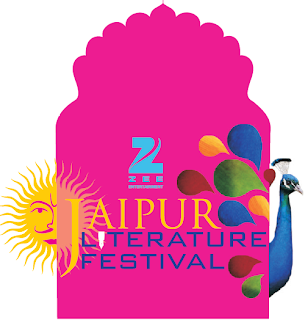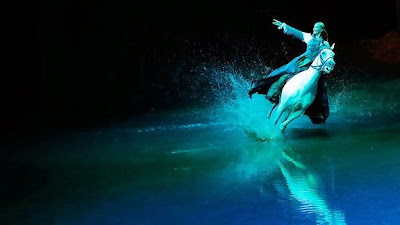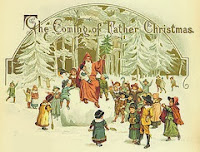Jaipur Literary Festival
 Every January, the glittering literati from the world over gather in the fabled Indian city of Jaipur to exchange ideas, present their thoughts, engage in heated debates, and discuss everything under the sun from fiction to biography, from history to music, and much, much more. Music concerts, art displays, and a wide variety of food forms the esthetic nourishment for the literary discussions.
Every January, the glittering literati from the world over gather in the fabled Indian city of Jaipur to exchange ideas, present their thoughts, engage in heated debates, and discuss everything under the sun from fiction to biography, from history to music, and much, much more. Music concerts, art displays, and a wide variety of food forms the esthetic nourishment for the literary discussions.
And best of all, the Jaipur Literary Festival is completely free to the general public. As you scroll through the 2014 program by venue or by date (January 17–21), you can watch videos of most of the sessions. The organizers and sponsors of the festival have really gone out of their way to support the idea that knowledge is meant to be shared widely and freely.
The main themes for 2014 were: Crime and Punishment, Democracy Dialogues, Women Uninterrupted, and Endangered Languages.
For a festival that is still in its infancy, started in 2006, it still featured over 240 authors, some of them very big names. Consider these: British celebrity chef Hugh Fearnley-Whittingstall, Mauritian Francophone writer Ananda Devi, Indian historian Urvashi Butalia, Iranian-American religion scholar Reza Aslan, British historian William Dalrymple, Pulitzer Prize-winning author Jhumpa Lahiri, British Roman scholar Mary Beard, Nobel Laureate Amartya Sen, British author Geoff Dyer, Harvard professor Homi Bhabha, American novelist Jonathan Franzen, Olympic gold medalist boxer Mary Kom, and on and on.
I have stars in my eyes just reading that program. What would it have been like to have been there. So listen to these talks amidst the splendor of the Diggi Palace, attending "The Greatest Literary Show on Earth!," according to Tina Brown.


 In its heyday, the ancient University of Nalanda was the premier education institution of higher learning in the world, long before the universities of Oxford, Heidelberg, or Bologna even came into existence.
In its heyday, the ancient University of Nalanda was the premier education institution of higher learning in the world, long before the universities of Oxford, Heidelberg, or Bologna even came into existence.  Nalanda was started in the 5th century, and it took 200 years for the original Nalanda to flourish into a leading center of learning. It was primarily a religious institution and taught Buddhism, medicine, philosophy, and mathematics. Thousands of students and scholars came from all over the world to study and to teach there. Extensive dormitories and kitchen facilities served to keep up with the influx of people. Big lecture halls as well as small ones served to meet the needs of the various courses taught there. The university was destroyed by invaders in 1193, leaving behind only ruins as testimonial to its glorious past.
Nalanda was started in the 5th century, and it took 200 years for the original Nalanda to flourish into a leading center of learning. It was primarily a religious institution and taught Buddhism, medicine, philosophy, and mathematics. Thousands of students and scholars came from all over the world to study and to teach there. Extensive dormitories and kitchen facilities served to keep up with the influx of people. Big lecture halls as well as small ones served to meet the needs of the various courses taught there. The university was destroyed by invaders in 1193, leaving behind only ruins as testimonial to its glorious past. An international effort by modern-day scholars is working towards achieving their vision to
An international effort by modern-day scholars is working towards achieving their vision to 
 As part of Wendy Crutcher's
As part of Wendy Crutcher's  The book would've done better as a long narrative nonfiction piece with a few days as an illustrative sample, rather than the long-winded 189 pages covering two and a half months. Having said that, the writing is gorgeous in a few places: expansive, imaginative, nuanced, and detailed.
The book would've done better as a long narrative nonfiction piece with a few days as an illustrative sample, rather than the long-winded 189 pages covering two and a half months. Having said that, the writing is gorgeous in a few places: expansive, imaginative, nuanced, and detailed.  Three months too late, but this just came to my notice. Every holiday season, the Bay Area near San Francisco comes alive with the Victorian era cheer of England with their
Three months too late, but this just came to my notice. Every holiday season, the Bay Area near San Francisco comes alive with the Victorian era cheer of England with their  "The environment is a clever conglomeration of constructed 'streets' and 'alleyways' with names like Pickwick Place and Petticoat Lane. Shops staffed by vendors in period attire sell everything from antique books to velvet gowns while more than a dozen restaurants and bars serve up a variety of traditional dishes and adult beverages."
"The environment is a clever conglomeration of constructed 'streets' and 'alleyways' with names like Pickwick Place and Petticoat Lane. Shops staffed by vendors in period attire sell everything from antique books to velvet gowns while more than a dozen restaurants and bars serve up a variety of traditional dishes and adult beverages." 

 In a spirit of great devotion to scholarship rooted in the deep belief that knowledge must be widely shared, the British Library has
In a spirit of great devotion to scholarship rooted in the deep belief that knowledge must be widely shared, the British Library has  "The images themselves cover a startling mix of subjects: There are maps, geological diagrams, beautiful illustrations, comical satire, illuminated and decorative letters, colourful illustrations, landscapes, [and] wall-paintings."
"The images themselves cover a startling mix of subjects: There are maps, geological diagrams, beautiful illustrations, comical satire, illuminated and decorative letters, colourful illustrations, landscapes, [and] wall-paintings." Concurrently, the Library is going to open a crowdsourcing project to "help describe what the images portray," in a bid to tag them and index them properly for better discoverability through search mechanisms.
Concurrently, the Library is going to open a crowdsourcing project to "help describe what the images portray," in a bid to tag them and index them properly for better discoverability through search mechanisms. In August of 2013,
In August of 2013,  When Dr. Katie Tucker from the University of Winchester carbon dated the oldest bone (pelvic bone also known jocularly as the "seat of power") in the box, she found that it dated back 895–1017 and was of a man aged 26–45. The remains had been found near the high altar of the abbey, indicating their high status. Given these particulars, the bone could belong to either King Alfred, King Edward the Elder, or King Edward brother Aethelweard.
When Dr. Katie Tucker from the University of Winchester carbon dated the oldest bone (pelvic bone also known jocularly as the "seat of power") in the box, she found that it dated back 895–1017 and was of a man aged 26–45. The remains had been found near the high altar of the abbey, indicating their high status. Given these particulars, the bone could belong to either King Alfred, King Edward the Elder, or King Edward brother Aethelweard.